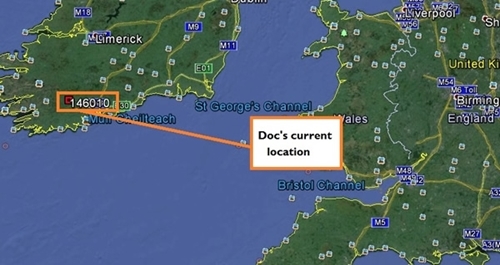By Chris Heward, Wetlands Assistant
Last week I wrote this blog, speculating on the current whereabouts of Doc. Doc was tagged in County Cork Ireland and migrated to Sweden to breed.
We hadn’t heard much more than that until last week when Doc unexpectedly sent us data from the middle of the Atlantic Ocean; certainly an unusual place for a woodland bird to be! Whilst the data was reportedly of a reliable accuracy, we had our suspicions that something was amiss.

Since then, Doc’s tag has transmitted newer data from the site in County Cork where s/he was tagged. Ironically, these data are of a lower quality than those supposedly sent from the Atlantic and as such have not been automatically plotted on the Woodcock Watch map. But they were received and logged nonetheless and were found by manually accessing the database.
Clearly, there’s something a little strange going on here; the dubious oceanic location was reported as highly accurate whilst the plausible and familiar location was classified as low quality!
We don’t think there’s any serious problem with the Doc’s tag, only that it is a little disorientated after such a long period of dormancy. Until recharging in sunny conditions last week, the tag hadn’t transmitted since August (back when Doc was in Sweden). Suddenly the tag has fired up again, over a thousand miles from its last location and following a long pause in transmission; it is bound to require a little acclimatisation time in order to find its bearings.
We still can’t be 100% sure of where Doc is until we have received several successive reliable transmissions, but these low-quality data provide us with a hint that all is well. We’re hoping that higher quality data can soon clarify the situation once and for all, but thankfully, it’s looking more and more likely that Doc dangerous Atlantic voyage was nothing more than a technical blip.
Thanks go to Luke Harman, our collaborator at the University of Cork, for flagging up the arrival of these new data.